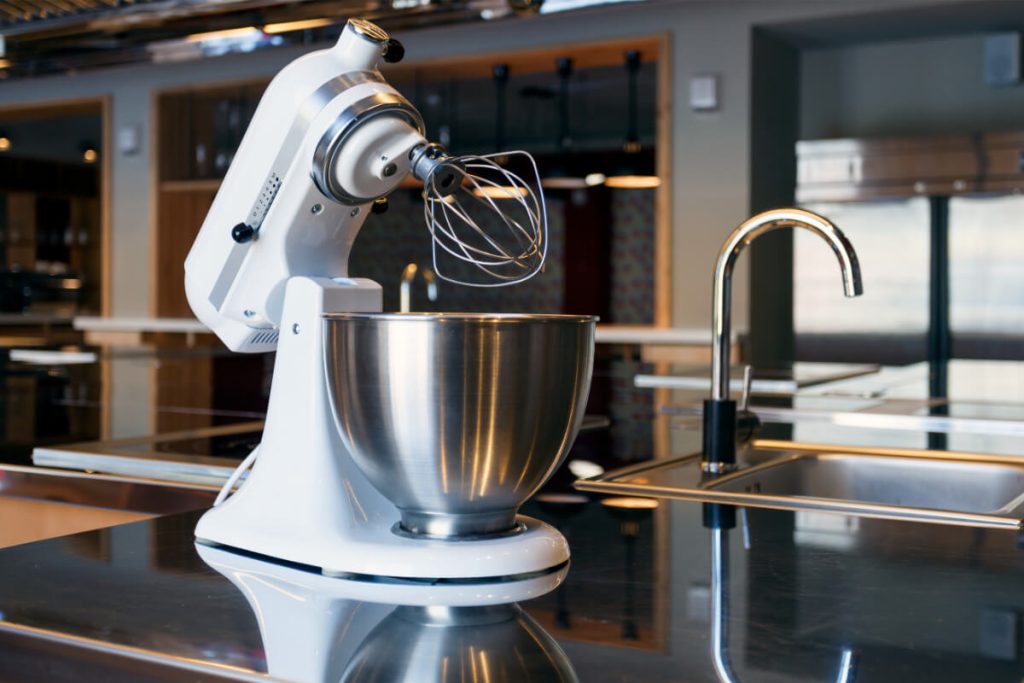What Size Mixer for Cake?

When baking cakes, choosing the right mixer size is crucial in achieving the desired results. The mixer’s capacity and power can greatly impact the mixing process and the quality of your cake. In this article, we will explore the importance of the best cake mixers size for cake making and guide you in selecting the appropriate size for your baking needs.
Baking a delicious and perfectly textured cake requires careful attention to detail, and the choice of mixer size is no exception. The right mixer can make your baking experience easier and more efficient while ensuring consistent results.
Importance of Mixer Size for Cake Making
The size of the mixer directly affects its ability to handle the ingredients and batter required for a cake. A mixer that is too small may struggle to mix the ingredients evenly, resulting in lumps or uneven textures. On the other hand, a mixer that is too large for your needs might not effectively incorporate all the ingredients, leading to inconsistent results.
Factors to Consider
Several factors should be considered to determine the ideal mixer size for your cake-making endeavors.
Recipe Quantities
Consider the quantities of ingredients specified in your cake recipes. Larger recipes with higher ingredient quantities will require a greater capacity and power mixer to handle the mixing process efficiently.
Type of Batter
Different types of cake batters have varying consistencies. Dense batters like those used in pound cakes require more power and capacity to mix thoroughly. Lighter batters like sponge or chiffon may not require as much power or capacity.
Mixer Capacity
Evaluate the capacity of the mixers you are considering. Mixers typically come in different sizes, ranging from small hand mixers to larger stand and commercial-grade mixers. The capacity of the mixer refers to the maximum amount of batter it can handle at one time.
Common Mixer Sizes for Cake Making
Let’s explore the most common mixer sizes used in cake making:
Hand Mixers
Hand mixers are compact and versatile, suitable for small-scale baking. They are convenient for lighter batters and smaller recipe quantities. Hand mixers usually come with different speed settings to accommodate various mixing requirements.
Stand Mixers
Best cake mixers to buy are larger and more powerful than hand mixers. They offer greater stability and often contain various attachments for different baking tasks. Stand mixers are ideal for medium to large-scale baking and can handle denser batters more effectively.
Commercial Mixers
Commercial mixers are heavy-duty machines designed for professional bakeries or large-scale production. These mixers have the highest capacity and power, capable of handling substantial quantities of batter and heavier doughs. They are not typically necessary for home baking unless you frequently bake in large quantities.
Choosing the Right Mixer Size
Selecting the right mixer size depends on the scale of your baking endeavors. Consider the following scenarios:
Small-Scale Baking
If you primarily bake small cakes or cupcakes for personal consumption or small gatherings, a hand mixer with a capacity of around 3 to 4 quarts should suffice. It offers versatility and ease of baking without taking up much space.
Medium-Scale Baking
For more extensive baking or occasional larger cakes, a stand mixer with a capacity of 4.5 to 6 quarts is a suitable choice. It provides more power and stability, allowing you to comfortably handle a broader range of recipes.
Large-Scale Baking
Consider investing in a commercial mixer when baking cakes on a larger scale, such as for events or businesses. These mixers typically have a capacity of 7 quarts or more, providing the necessary power and efficiency for high-volume production.
Tips for Optimal Cake Mixing
Regardless of the mixer size, keep the following tips in mind to achieve optimal results when mixing cake batter:
- Always follow the recipe instructions precisely, including mixing times and speeds.
- As the batter begins to come together, raise the speed of the mixer.
- Make sure all ingredients are blended by periodically scraping down the edges of the bowl.
- Avoid overmixing, as it can lead to a denser texture or tunneling in the cake.
Conclusion
Selecting the right mixer size is essential for achieving excellent cake results. Consider the recipe quantities, batter type, and baking scale to determine the appropriate mixer size. Hand mixers suit small-scale baking, while stand mixers accommodate medium-scale baking needs. Commercial mixers are reserved for large-scale production. You’ll be equipped to create delicious cakes easily and precisely by choosing the right mixer.
FAQs
Can I use a hand mixer for large cake recipes?
While using a hand mixer for larger recipes is possible, achieving consistent results may be more challenging. Consider a stand mixer or commercial mixer for better performance.
What happens if I use a mixer with a smaller capacity than required?
Using a mixer with a smaller capacity may result in difficulties incorporating all the ingredients, leading to an uneven batter and inconsistent texture.
Can I mix cake batter by hand instead of using a mixer?
Mixing cake batter by hand is possible, but it requires more effort and may not yield as consistent results as using a mixer. Mixers provide more efficient and thorough mixing.
--------------------------------
Guestbeat.com Notice!
Audience discretion is needed, Read TOS.
Submit Guest Post / Read Latest / Category List
App & Rate-Us / Subscribe Daily Newsletter (FREE)



